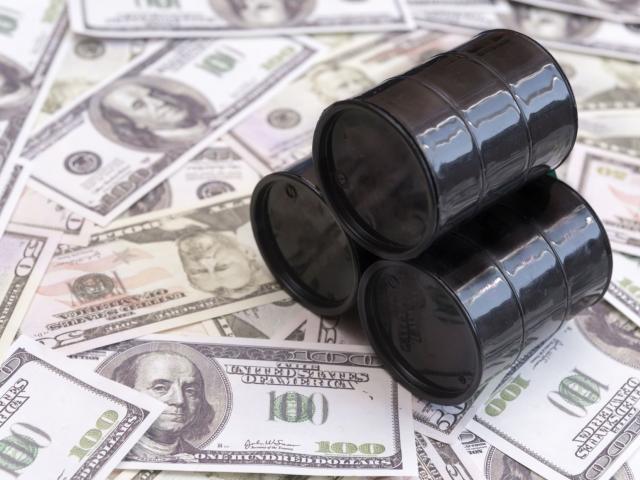.
By Oren Laurent
President, Banc De Binary
On Friday, December 4, US non-farm payroll data was released – the last time this will happen in 2015. The consensus estimate figure for November was 200,000 new jobs; however the actual figure came in over 5% above expectations at 211,000 new jobs created.
This follows an exceptional month of non-farm payroll data in October 2015 where 271,000 new jobs were reported after consensus estimates placed the figure at 180,000. However such was the strength of the US economy in October that the actual jobs figure was revised upwards to 298,000 new jobs created. The data is typically released on the first Friday of the month, and it is one of the most highly anticipated economic metrics.
Better Than Expected But Not Enough To Pop The Bubbly Just Yet
The figure itself can be interpreted in several ways: positive and negative. Viewed from a positive perspective, the NFP figure came in 11,000 jobs over expectations and sentiment is therefore bullish. However, it is substantially lower than the NFP data for October which was revised upwards to 298,000 new jobs for the month. The biggest drivers of job growth were healthcare, construction, professional and technical-related services. As expected, information and mining employment suffered in November.
The US non-farm payrolls chart has endured more successive monthly declines (month on month) than increases. Between May and September, each successive month offered up a smaller increase in employment over the previous month, although there have been no negative growth rates in the US all year long.
What Do All These Numbers Mean And How Will They Affect The Fed?
If we break down the numbers, we can see that healthcare increased by 24,000 jobs in November, employment in drinking places and food services increased by 32,000 in the month, construction increased by 46,000, and retail trade increased by 31,000. There were, however, two negative growth rates in information which shed 12,000 jobs and mining which gave up 11,000 jobs. The employment report is especially important at this critical juncture. The Federal Reserve is meeting on December 15/16 for the last non-farm payrolls jobs report of the year. The December report will be discussed on the first Friday of January 2016. The next significant announcement will be US retail sales month on month for November on December 11, just four days before the decision about the interest rates. The Fed continues to target strong domestic growth data in the form of retail sales, non-farm payrolls, healthy unemployment rates, rising purchases and rising wages. The US employment report immediately cast a shadow on the size and scope of the US recovery, with the Fed decision slightly less likely than before.
However, the figure is still sufficiently strong to warrant a short-term interest-rate hike in December. This would be the first time in almost nine years that the Fed has initiated an interest-rate hike.
In other positive news, the unemployment rate is holding firm at the October level of 5%. This certainly bodes well for the upcoming Fed decision next week. That the unemployment rate is at a 7.5 year low is laudable. The Fed has been targeting an unemployment rate of 4.9%, and that figure is considered the full employment level. The NFP data is the clearest possible indicator that the most important components of the US economy are functioning as they should. All of this points to an inescapable reality: a December rate hike is more likely than ever.
The Fed And The ECB: Polar Opposites In Monetary Policy
On Wednesday, December 2, Janet Yellen addressed legislators and she made it clear that the US economy was on track to achieving its overall objectives. As a result, the path has been cleared for a December liftoff. According to Yellen, the US economy will need to create a little less than 100,000 jobs every month to maintain pace with the growth in the population. Therefore, the November figure of 211,000 new jobs more than satisfied expectations.
The vast majority of primary dealer banks dealing with the Federal Reserve Bank are expecting a rate hike next week. The consensus among central bankers is clear: a slow and steady rate hike is preferred to a sharp and sudden uptick in the interest-rate. This is likely to continue throughout 2016, but the Fed will be careful not to increase interest rates too much because the biggest debtor – the US government – would not be able to repay excessive interest on almost $20 trln of national debt.
Europe Gets A Boost From Lukewarm ECB Actions, But Dollar Wins Out
Across the Atlantic, the European Central Bank moved in the opposite direction. Mario Draghi of the ECB decided to make good on his promises to prop up the Euro and stimulate the Eurozone by reducing the deposit rate by 10 basis points to -0.3% and by a continuance of the asset repurchases programme for an additional six months to March 2017 at a rate of EUR 60 bln per month. Strangely, the actions taken by the ECB strengthened the Euro. The European currency hit a 1-month high against the greenback after the announcements were made. Currency traders, market participants and speculators were expecting an increase in the asset repurchases programme in the region of EUR 75 bln per month. The fact that less was done to stimulate the Euro helped to strengthen it in the currency markets. However stocks turned south since the prospect of a strong euro is a negative harbinger for export-driven growth. By the end of the trading week on Friday, December 4, the USD strengthened against the euro after it was reported that OPEC could not come to consensus regarding a production ceiling on oil output. In other words, OPEC will continue to pursue market share above price considerations.
Please note that this column does not constitute financial advice.








